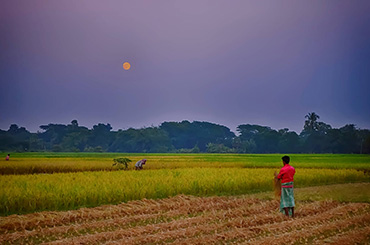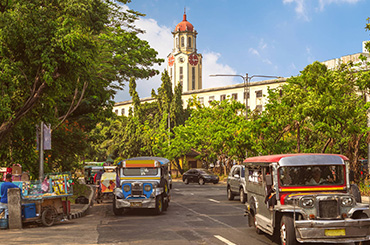-
Audit approach overview
Our audit approach will allow our client's accounting personnel to make the maximum contribution to the audit effort without compromising their ongoing responsibilities
-
Annual and short period audit
At P&A Grant Thornton, we provide annual and short period financial statement audit services that go beyond the normal expectations of our clients. We believe strongly that our best work comes from combining outstanding technical expertise, knowledge and ability with exceptional client-focused service.
-
Review engagement
A review involves limited investigation with a narrower scope than an audit, and is undertaken for the purpose of providing limited assurance that the management’s representations are in accordance with identified financial reporting standards. Our professionals recognize that in order to conduct a quality financial statement review, it is important to look beyond the accounting entries to the underlying activities and operations that give rise to them.
-
Other Related Services
We make it a point to keep our clients abreast of the developments and updates relating to the growing complexities in the accounting world. We offer seminars and trainings on audit- and tax-related matters, such as updates on Accounting Standards, new pronouncements and Bureau of Internal Revenue (BIR) issuances, as well as other developments that affect our clients’ businesses.
-
Tax advisory
With our knowledge of tax laws and audit procedures, we help safeguard the substantive and procedural rights of taxpayers and prevent unwarranted assessments.
-
Tax compliance
We aim to minimize the impact of taxation, enabling you to maximize your potential savings and to expand your business.
-
Corporate services
For clients that want to do business in the Philippines, we assist in determining the appropriate and tax-efficient operating business or investment vehicle and structure to address the objectives of the investor, as well as related incorporation issues.
-
Tax education and advocacy
Our advocacy work focuses on clarifying the interpretation of laws and regulations, suggesting measures to increasingly ease tax compliance, and protecting taxpayer’s rights.
-
Business risk services
Our business risk services cover a wide range of solutions that assist you in identifying, addressing and monitoring risks in your business. Such solutions include external quality assessments of your Internal Audit activities' conformance with standards as well as evaluating its readiness for such an external assessment.
-
Business consulting services
Our business consulting services are aimed at addressing concerns in your operations, processes and systems. Using our extensive knowledge of various industries, we can take a close look at your business processes as we create solutions that can help you mitigate risks to meet your objectives, promote efficiency, and beef up controls.
-
Transaction services
Transaction advisory includes all of our services specifically directed at assisting in investment, mergers and acquisitions, and financing transactions between and among businesses, lenders and governments. Such services include, among others, due diligence reviews, project feasibility studies, financial modelling, model audits and valuation.
-
Forensic advisory
Our forensic advisory services include assessing your vulnerability to fraud and identifying fraud risk factors, and recommending practical solutions to eliminate the gaps. We also provide investigative services to detect and quantify fraud and corruption and to trace assets and data that may have been lost in a fraud event.
-
Cyber advisory
Our focus is to help you identify and manage the cyber risks you might be facing within your organization. Our team can provide detailed, actionable insight that incorporates industry best practices and standards to strengthen your cybersecurity position and help you make informed decisions.
-
ProActive Hotline
Providing support in preventing and detecting fraud by creating a safe and secure whistleblowing system to promote integrity and honesty in the organisation.
-
Accounting services
At P&A Grant Thornton, we handle accounting services for several companies from a wide range of industries. Our approach is highly flexible. You may opt to outsource all your accounting functions, or pass on to us choice activities.
-
Staff augmentation services
We offer Staff Augmentation services where our staff, under the direction and supervision of the company’s officers, perform accounting and accounting-related work.
-
Payroll Processing
Payroll processing services are provided by P&A Grant Thornton Outsourcing Inc. More and more companies are beginning to realize the benefits of outsourcing their noncore activities, and the first to be outsourced is usually the payroll function. Payroll is easy to carve out from the rest of the business since it is usually independent of the other activities or functions within the Accounting Department.
-
Our values
Grant Thornton prides itself on being a values-driven organisation and we have more than 38,500 people in over 130 countries who are passionately committed to these values.
-
Global culture
Our people tell us that our global culture is one of the biggest attractions of a career with Grant Thornton.
-
Learning & development
At Grant Thornton we believe learning and development opportunities allow you to perform at your best every day. And when you are at your best, we are the best at serving our clients
-
Global talent mobility
One of the biggest attractions of a career with Grant Thornton is the opportunity to work on cross-border projects all over the world.
-
Diversity
Diversity helps us meet the demands of a changing world. We value the fact that our people come from all walks of life and that this diversity of experience and perspective makes our organisation stronger as a result.
-
In the community
Many Grant Thornton member firms provide a range of inspirational and generous services to the communities they serve.
-
Behind the Numbers: People of P&A Grant Thornton
Discover the inspiring stories of the individuals who make up our vibrant community. From seasoned veterans to fresh faces, the Purple Tribe is a diverse team united by a shared passion.
-
Fresh Graduates
Fresh Graduates
-
Students
Whether you are starting your career as a graduate or school leaver, P&A Grant Thornton can give you a flying start. We are ambitious. Take the fact that we’re the world’s fastest-growing global accountancy organisation. For our people, that means access to a global organisation and the chance to collaborate with more than 40,000 colleagues around the world. And potentially work in different countries and experience other cultures.
-
Experienced hires
P&A Grant Thornton offers something you can't find anywhere else. This is the opportunity to develop your ideas and thinking while having your efforts recognised from day one. We value the skills and knowledge you bring to Grant Thornton as an experienced professional and look forward to supporting you as you grow you career with our organisation.
(Part 2)
Productivity
The Roadmap shows a comparative analysis of rice farming productivity in the Philippines, Vietnam and Thailand. The comparison was made on the basis of the relevant data from the more productive province in each country, as shown below:

The foregoing comparison clearly shows that the Philippine production cost per kilo is higher. But at the same time, the rice produced expressed in tons per hectare is lower, particularly with Thailand where the rice production per hectare is double that of the Philippines. It is a case of double whammy for the Philippines: incurring higher cost but producing lower output.
The Roadmap does not provide more details from which we can determine the factors of production causing the large comparison differences. These details are necessary when formulating Philippine public policy choices to improve the current dismal situation. However, it is safe to assume that one of the factors, if not the single one that makes the greatest impact, is the comparative average rice farm size. The Philippine rice farm size at 1.4 hectares in 2018, and which is probably even smaller today, is so small that it is more likely that the average farm size in the two other countries mentioned is larger than that of the Philippines. Size is a major factor in production. When scaled up, size or capacity produces higher productivity per unit of measure. Therefore, its smaller farm size is a major factor in the much lower productivity that the Philippines derive from its rice farms.
Concluding comments
There are two things that stand out from the foregoing information and analyses. One is the very small average size of our rice farms which, in my view, is a major factor that causes the very low productivity of our rice farms. And the other is the current miserable economic condition of most of our rice farmers, both the landowning farmers and non-landowning farmers, but especially the latter.
No matter what we do in trying to increase rice farming productivity, it will not result to a significant improvement if we do not endeavor to increase substantially the size of our rice farms. Try to picture it yourself, there is nothing much one can do in trying to raise productivity in a piece of farmland measuring 1.4 hectares or less, whether farming is mechanized or not. In fact, by just increasing the farm size itself, and using the same method of production as before, it will already produce higher productivity. Such is a natural result of scaling up.
We can only increase the average rice farm size by removing the present legal limit in the ownership of farmland, which is presently 5 hectares per person. By removing this limit or increasing it substantially, the marketplace will do the rest in increasing farm size. There will be buyers who see good profits in large-scale agriculture production because of economy of scale and its suitability to full mechanization, two factors which will certainly lead to much higher productivity. And there will be sellers when they see an attractive price, which increased demand usually produces. To make these buying and selling activities more vigorous, it is necessary that we also remove any present restrictions in the disposal of farmland acquired by the beneficiaries of the past land reform program.
There is nothing that prevents us from removing the present farm size limit or increasing it to a much larger size. Having gone through a land reform program, however imperfectly it was executed, we have duly performed our social obligation to our landless countrymen. I believe then that there is no longer any impediment in removing or increasing the farm size limit. We must do so absolutely if we want to improve our rice farming productivity to a high degree.
Let me now turn to the rice farmers, both landowners and non-landowners. As mentioned before, most of them have an annual income that is below the poverty threshold. They need help to escape from this pitiful condition.
This observation recalls my earlier commentary suggesting that the government adopt a program of providing poor Filipinos a basic income. This program will cover all poor families whose annual income is within the poverty threshold. To be clear, the program coverage will include, in addition to the rice farmers, as defined above, all other farmers, owning the farmland or not, and the urban poor. This program will replace the present 4Ps, the amount of which given per family is miniscule.
I realize that such a program is very controversial because some believe that the beneficiaries would tend to become lazy and would just spend part of the money in consuming alcohol and engaging in other vices. However, I recall from my readings that the post reviews of similar programs adopted by some countries did not indicate a significant occurrence of such results. Moreover, adoption of public policy must be dictated by the benefits it brings to the great majority and must not be deterred by the consideration of the anticipated bad behavior of the few.
The current poverty threshold for a family of five people has increased to ₱166,000 per year (rounded off; ₱13,873 per month) as determined by the PSA in 2023. For purposes of illustration, let’s get a fraction of that amount to be given as basic income to poor families. Say, ₱4,000 per month or ₱48,000 per year for each poor family. That translates to ₱144 billion per year based on the reported 3 million poor families in 2023 as similarly determined by PSA. I believe that this total amount per year of ₱144 billion is affordable and therefore doable. Moreover, this total amount should decline as we move towards the future.
Nowadays, it should not be difficult to manage such a program as cash transfers can be done electronically and therefore quickly with minimum human intervention, reducing substantially the probable occurrence of corruption.
An important matter to consider is that such a total amount will be spent by the beneficiaries for basic consumption, such as food and clothing, which are locally produced using substantially local materials and employing local labor. Such consumption, taken alone by itself, will certainly add to economic growth.
In sum, removing or increasing substantially the present legal limit in the ownership of farmland will significantly increase productivity in the production of rice and other agricultural crops and produce.
Giving the Filipino poor a meaningful basic income does not result to a wasteful use of money. On the contrary, doing so helps the poor, especially the farmers, in improving their living conditions which, in turn, provides a contribution, in no small measure, to economic growth.
As published in BusinessWorld, dated 28 March 2025




